Then & There Hunting Hints For Novices
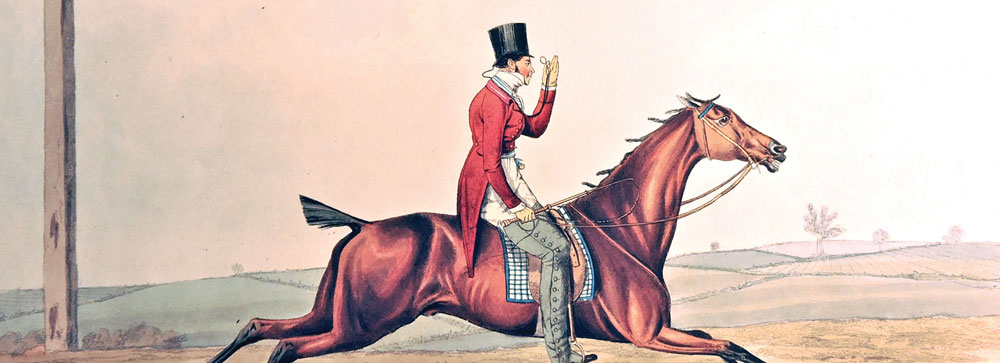
Story and photos by Richard Hooper
I have sat in a saddle—yes, even when it was attached to a horse and the horse was moving forward at a variety of admittedly uncontrollable speeds, gaits, if you insist. This has occurred on enough occasions for my accumulated distance to be measured in miles. It would, however, be a travesty or a comedy if I were to call this riding. My rhythm while posting, more often than not, was sorely counter to that of the horse. Any harmonious progression would have been mere luck. I could only guess as to what leg the horse might be leading with.
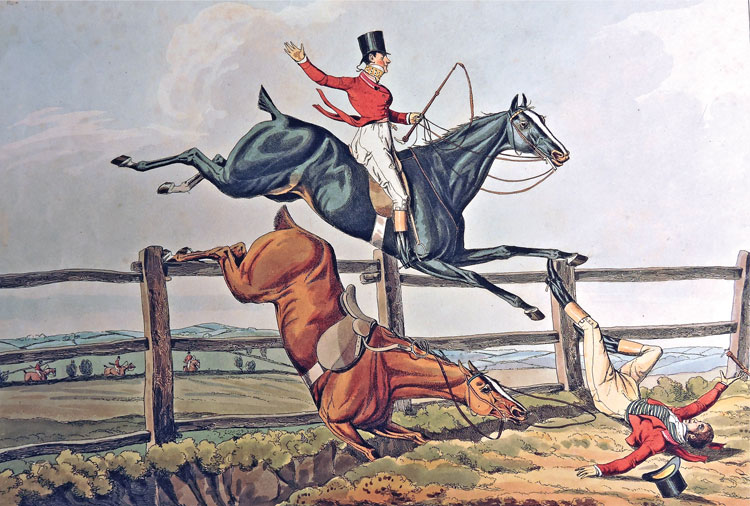
Given the nature of my equestrian abilities, I have never attempted to follow hounds on horseback and, therefore, have not been in need of becoming fully educated in the matters of etiquette and turnout. Those who have grown up in hunting families have observed the formalities and were no doubt tutored along the way. Yet there are others who have plunged in more precipitously, hopefully having observed some meets and having received advice from friends with hunting experience.
It appears, however, that for many generations there have been those not properly schooled. In the preface to “Practical Hints for Hunting Novices” by Charles Richardson (London: 1906) the author writes that, “…because of the increased difficulties which Masters of Hounds and Field Masters have lately found with regard to the management of their fields. And as much of the want of discipline which is seen from day to day is the outcome of ignorance on the part of the offenders, and is by no means intentional, it appeared likely that a few practical hints as to behaviour would be of assistance to those hunting people who had not been in the way of securing what may be called a hunting education.”
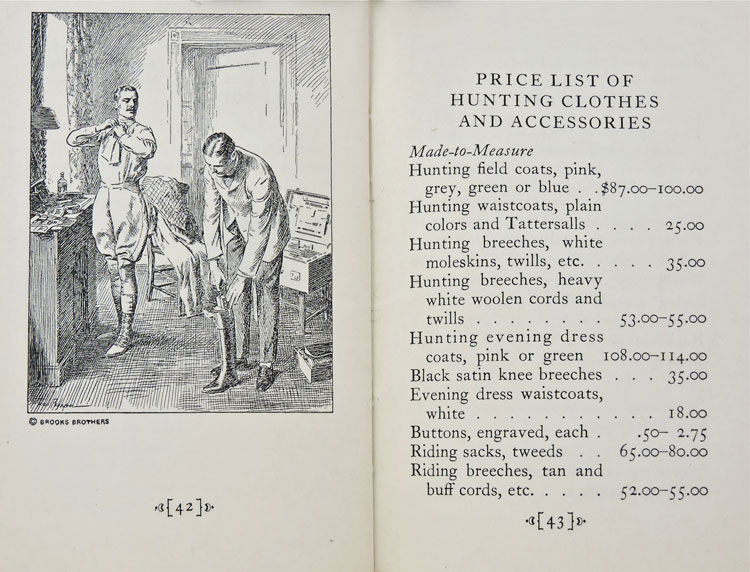
Nothing can take the place of experience, but a leg-up can be obtained from “Foxhunting Formalities” by J. Stanley Reeve, published in book form by the Derrydale Press in 1930, after appearing in The Sportsman.
There was another self-help work, “Hunting Hints for the Novice” by an M.F.H., that appeared in 1927, published by the clothiers, Brooks Brothers. Helping to guide one to proper attire for foxhunting and beagling, with an extensive list of priced items, it offered little else.
Turnout is important. Along with riding ability and knowledge of etiquette it forms a core of competence. But if a component is lacking how does one compensate?
Henry Alken, artist of Regency and early Victorian sport and commentator on human foibles, took a look at this condition in his work “How to Qualify for a Meltonian,” published in 1819. His advice was, basically, to fake it, and with six deceptively beautiful, hand-colored plates and a bit of text, he tells his readers how to do so—and the adversity that can occur if one does.
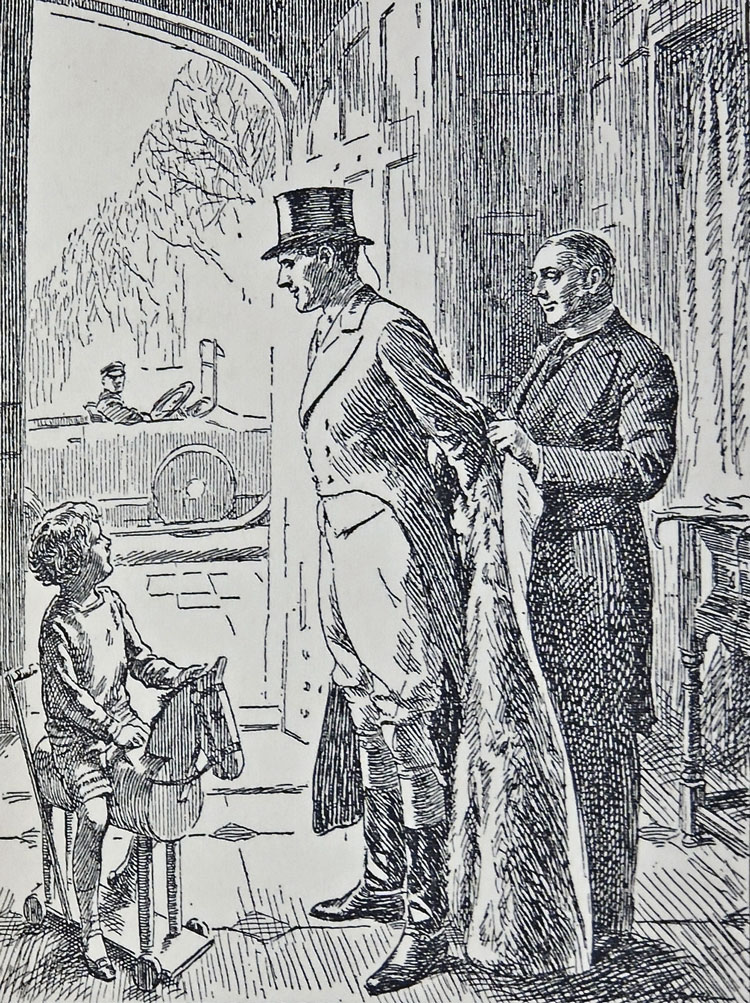
The town of Melton Mowbray nestles in Leicestershire, England’s fabled foxhunting country. To be a Meltonian would have indicated one was among the crême de la crême of hunting personages.
As Alken explains in a preface to the plates, “My motive is, to give some little instruction for the qualification of a Meltonian, and at the same time to warn all aspiring persons of the difficulty they have to encounter even in the endeavor at perfection in this extreme of Sporting excellence. The next best thing to being a man of high consideration, is to be taken for one: to be thought in any way like a Meltonian is honour quantum suf. (of sufficient amount) for ninety-nine in a hundred.”
The explanations to the plates provide some rather specious advice. In “How To Go To Cover,” Alken explains that this should never be done at less than 16 miles an hour. In “How To Ride Down Hill,” we are told to, “Be sure to ride down hill at top speed. However steep it may be, you must not exhibit the most distant sign of fear…. Even here let your seat be easy and elegant.” Throughout Alken’s text to the plates, he tells the reader that if his advice is followed, “you may be taken for a real M.”
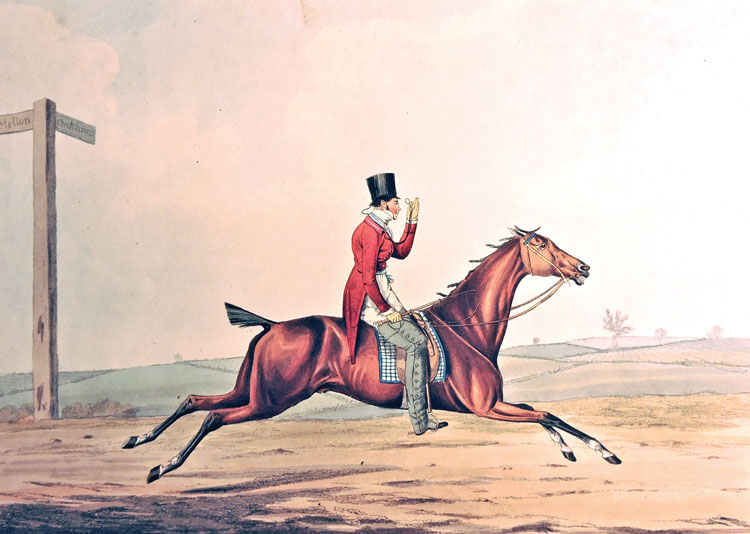
The humor in Alken’s first five plates sets the reader up for a sobering tone in the final plate. The image shows a horse and rider going over a fence just before trampling a fallen rider on the other side. The plate is “How To Take The Lead,” and Alken says of it: Very few sporting men arrive at this elevated position. If, by being well laid in, you have the opportunity of taking the lead, do it all risks. You must have no more fellow-feeling in fox-hunting, than you have in your political career. Ride straight to your point. Should you be called upon to make your appearance before a coroner’s jury, you may calculate on the pleasure you will afterwards receive, by the side of every cover where you are known, to hear, in an under tone, such observations as, That is one of the most desperate riders in the world, &c.; and you will have the satisfaction of knowing it to be true. Do something like all this, and you may at last be taken for a real M.
Should one be seeking information on hunting turnout and etiquette it can be found at horsecountrylife.com/catalog/turnout.html provided by Horse Country in Warrenton. ML


